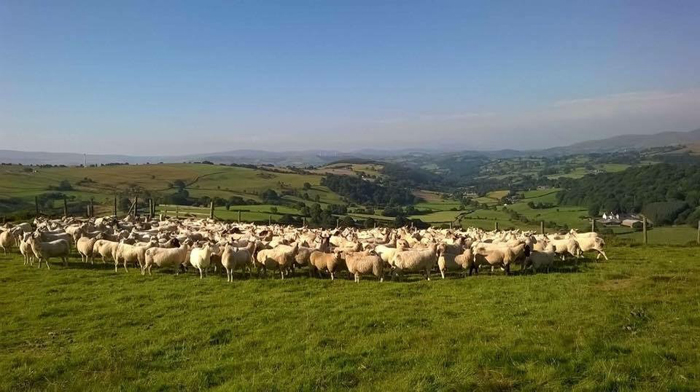SQPs are advised not to assume Nematodirus is the only worm causing problems in lambs this spring. Zoetis’s Parasite Watch results have found that other stomach worms are also challenging stock.
In North Wales, sheep farmer Owen Burns Dan Y Deri, Corwen, one of 18 farmers involved in the Parasite Watch scheme, found over 2,000 eggs per gram (epg) in samples taken in six-week-old lambs, none of which were Nematodirus.
Vet Dr Dave Armstrong from Zoetis says farmers and SQPs shouldn’t just assume because of the time of the year that Nematodirus is the only worm challenge.
“Undoubtedly we are going to see a mass Nematodirus hatch as the weather warms up, and classically everyone talks about treating with a white wormer if Nematodirus is there. However, while a white wormer is good at treating Nematodirus, it may not reliably tackle other worms that are present,” he says.
Dr Armstrong advises farmers to take faecal egg counts and use the information to get advice on the right treatment.
At Mr Burns’ farm, faecal egg counts taken on 9th April from lambs born at the beginning of March were found to have egg counts of 2,170 epg. This is greatly above the 250 epg cut off at which production losses could be occurring.
Zoetis account manager Ifor Jones, who took the samples at Dan Y Deri, says Mr Burns was surprised by the results.
“Owen would normally drench lambs before being turned out onto the mountain when they are a couple of months old, but is now going to treat lambs with a drench containing moxidectin,” he said.
Mr Jones believes the warm weather seen at the start of April, when temperatures averaged 12-15C sparked some worm activity on the land earlier than would be expected.
“It’s not Nematodirus though, it’s other stomach worms we have been seeing. Although Mr Burns didn’t see any obvious check in lamb growth or much scouring, if he wasn’t doing faecal egg counts, then undoubtedly, he would have had some loss in live-weight gain,” he says.
Mr Jones says the same worm pattern has been seen at the Chatsworth Estate in Bakewell, Derbyshire, where egg counts taken on 6th April in six-week-old lambs found levels at 285 eggs/g.
“Farm manager David Howlett had seen one or two lambs scouring, but not badly and felt lambs could be doing better. They have now treated lambs with levamisole and he has seen an improvement in lambs. We will be going back and doing a post treatment test,” he adds.
Mr Jones urges farmers to take faecal eggs counts. “Find out what is happening on your farm and then you can select the appropriate treatment,” he says.
How to use Parasite Watch
The aim of Parasite Watch is to show what is happening across the UK using an interactive map found at www.parasitewatch.co.uk. Parasite data from each of the farms will be updated regularly, which will allow farmers to see if there are spikes in certain parasites throughout the year in their area and enable them to take appropriate action.
To use the map, click on a farm in your area and details of any parasites that have been found as well as when they were detected will be displayed. Test results will be online within hours of the test being taken.


